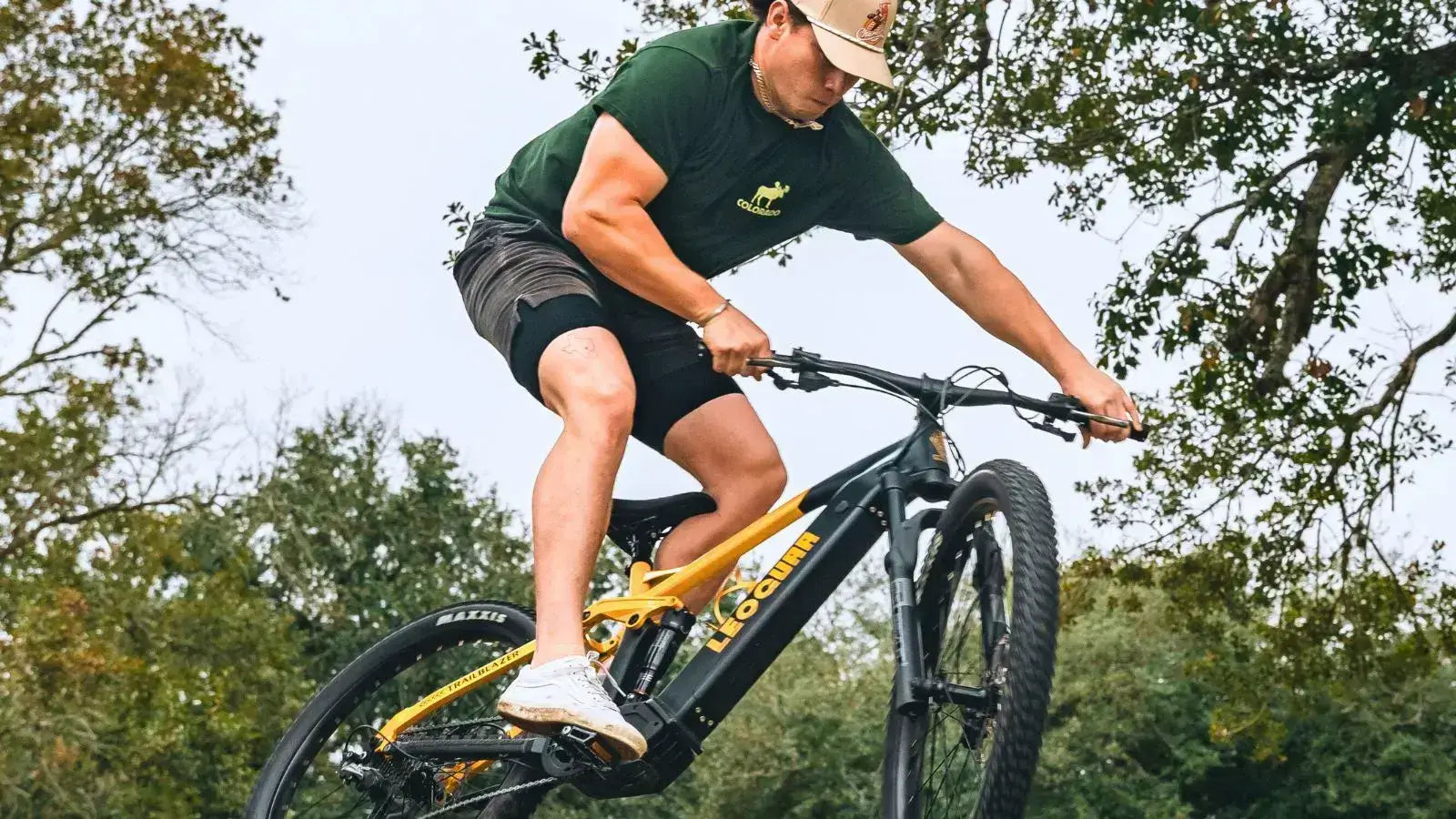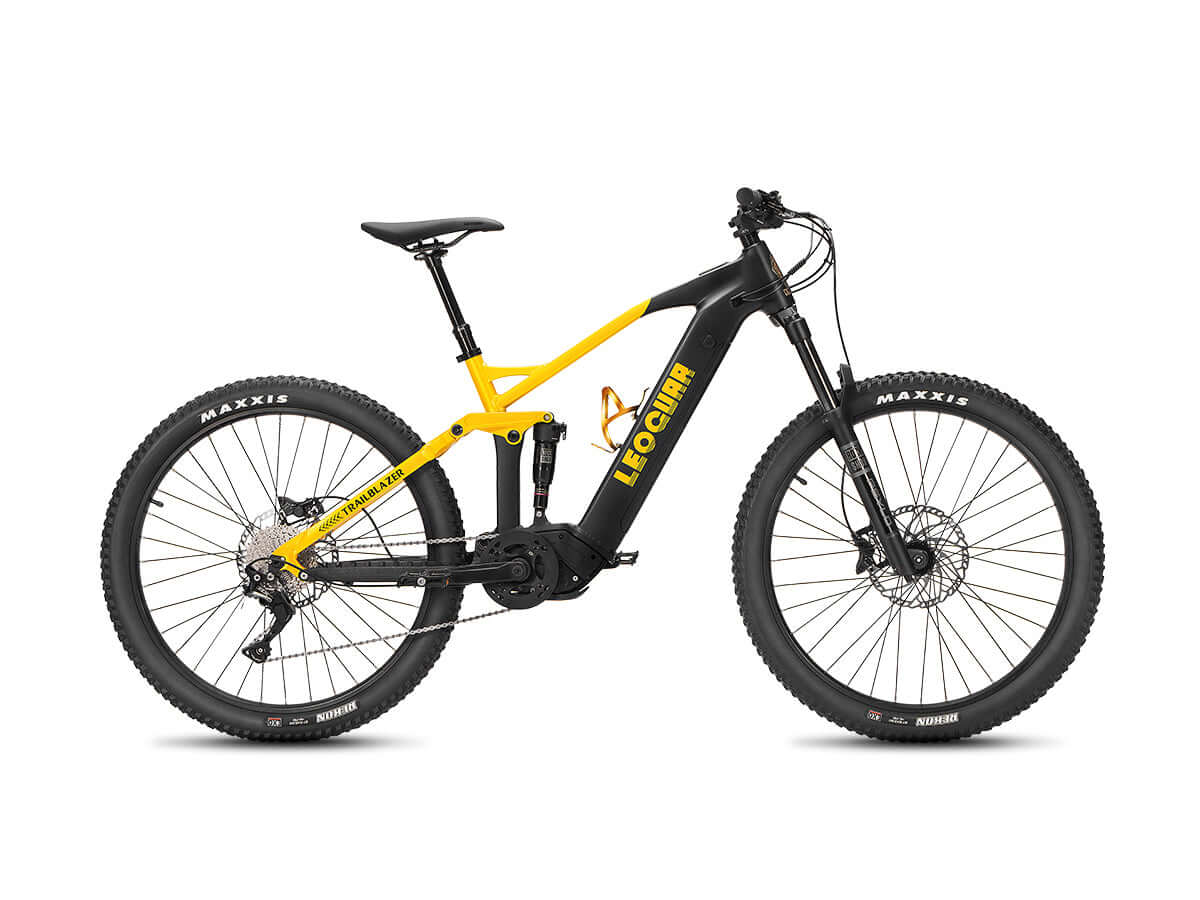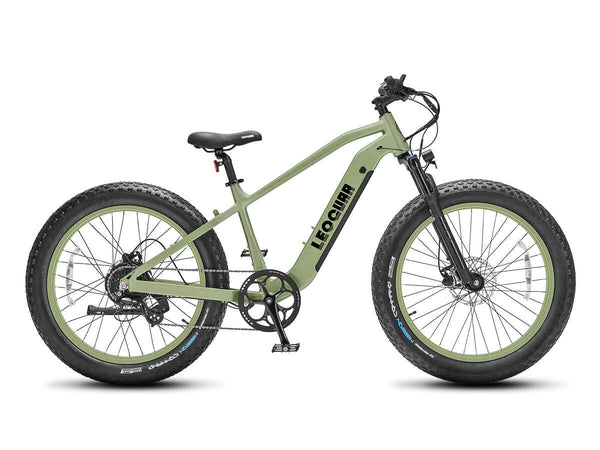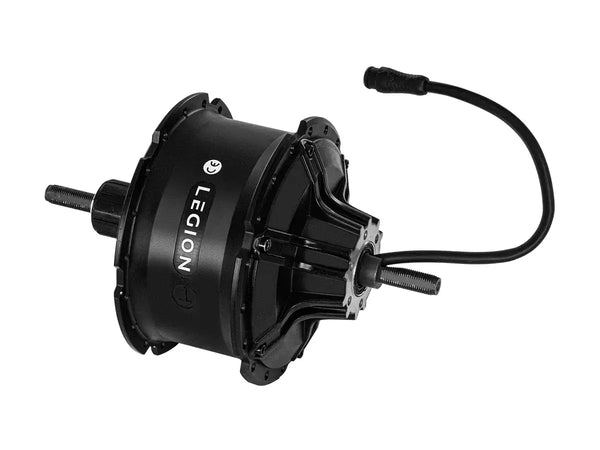
Hub Motor Ebike Torque vs Mid-Drive: What the Specs Don’t Tell You
Beyond the Spec Sheet
When you're shopping for an ebike, the spec sheet can feel like a minefield of numbers. You see a hub motor ebike boasting 80 Nm of torque, and a mid-drive ebike with just 60 Nm. The logical conclusion? The hub motor must be more powerful. But then you ride them, and on that first steep hill, the mid-drive feels stronger. This is a common point of confusion, and it's exactly why we're here. The number on the box is not the full story. It's frustrating when a bike with higher torque feels less powerful.
In this guide, we'll explain torque and what the spec sheets don't tell you about the ride feel, efficiency, and true capability of an electric bike hub motor versus a mid-drive. The secret isn't just about how much power a motor has, but how and, more importantly, where that power is delivered to the bike.
Torque: Half the Equation
To understand the real-world difference, we first need to get a handle on the numbers and the mechanics behind them. Torque is a crucial metric, but its effectiveness is dictated entirely by the motor's placement and design.
What is Ebike Torque?
Think of torque (measured in Newton-meters, or Nm) as the twisting force that gets you moving from a standstill. It's the initial grunt power, like the effort you use to twist open a stubborn jar lid. A higher Nm number generally means more oomph off the line and quicker acceleration. It's the force that you feel pushing you forward when the motor engages. While this number is a useful starting point, it loses its meaning without understanding where that force is applied.
The Critical Distinction
The fundamental difference between these two motor types lies in their connection to your bike's drivetrain. This is the key that unlocks the whole performance puzzle. A mid-drive motor is located at the crankset, where your pedals are. It applies power directly to the chain. This means the motor's power is routed through your bike's gears, just like the power from your legs.
An electric bike hub motor is housed in the center of the front or rear wheel. It applies its power directly to the wheel, spinning it independently of the bike's gears. As the experts at a leading ebike resource explain, hub motors operate with complete independence of your pedal transmission.
Here's the simplest way to visualize the power flow:
- Mid-Drive: Motor → Crank → Chain → Gears → Wheel
- Hub Motor: Motor → Wheel
This single difference changes everything about how the bike performs under load.
The Feel of Power
Specifications can't describe sensation. The most significant difference between a hub motor ebike and a mid-drive isn't in the numbers, but in the distinct feeling you get while riding. This is where we move beyond the marketing and into the actual experience.
The Hub Motor Push
Riding a hub motor ebike often feels like getting a powerful, distinct push from behind. When the motor engages, it delivers a surge of power that feels separate from your own pedaling effort. It's a sensation of being propelled forward, allowing you to glide along with less physical input. This is because the motor is doing its own thing, turning the wheel for you. It's an assistive force that works alongside you, rather than with you. It's less about making you stronger and more about adding a separate engine to your bike.
The Mid-Drive Amplification
In contrast, a mid-drive motor feels like it's giving you a set of bionic legs. The experience is incredibly intuitive and natural. The motor amplifies your own pedaling effort, so the harder you push on the pedals, the more assistance you receive. It doesn't feel like a separate push; it feels like your own power has been amplified tenfold. This creates a seamless, integrated ride that feels just like riding a regular bike, only you've suddenly become a world-class athlete. The power delivery is smooth and directly proportional to your input.
Why They Feel So Different
This dramatic difference in ride feel comes down to the sensors each system uses. Most hub motor ebikes rely on a cadence sensor. This sensor simply detects that the pedals are turning. It doesn't know how hard you're pedaling. This results in a more binary, on/off style of power delivery. Once you start pedaling, the motor delivers a set amount of assistance based on your chosen level, creating that distinct push sensation.
Many mid-drive systems, on the other hand, use a sophisticated torque sensor. This sensor measures the actual force you're applying to the pedals. It tells the motor to deliver a proportional amount of assistance. Pedal lightly, and you get a little help. Stomp on the pedals, and the motor gives you a huge boost. This is the technology that creates that incredibly natural, amplified feeling.
Real-World Performance
Now that we understand the mechanics and the feel, let's apply it to real-world riding scenarios. This is where the theoretical differences become practical advantages and disadvantages, especially when it comes to climbing hills and long-term maintenance.
Hill Climbing: The Mountain Goat
This is where a mid-drive ebike truly shines. Because the motor utilizes the bike's existing gears, you can shift to an easy gear on a steep hill. This does two things: it makes it easier for you to pedal, and it allows the motor to spin at a higher, more efficient RPM. Just like a car's engine, an ebike motor has an optimal speed range where it produces maximum power and torque efficiently. By downshifting, you keep the mid-drive motor in its sweet spot, allowing it to deliver massive torque to the rear wheel without straining or overheating. This is why a 60 Nm mid-drive can out-climb an 80 Nm hub motor.
A hub motor, with its single internal gear, doesn't have this advantage. On a long, steep climb, the wheel speed drops. This forces the hub motor to operate at a very low RPM, far outside its peak efficiency band. Its effective torque plummets, it generates more heat, and it struggles to maintain momentum. As extensive testing shows, mid-drives can efficiently conquer sustained inclines of 15% and beyond, while many hub motors begin to labor on grades over 10-12%. Our own experience aligns with data from comprehensive tests like our comprehensive motor comparison test, which consistently demonstrates the superiority of geared mid-drive systems on challenging terrain.
Maintenance and Drivetrain Wear
The trade-offs continue when we look at maintenance. A mid-drive motor channels all its power—plus your own—through the bike's drivetrain. This puts significantly more stress on the chain, cassette, and chainrings. As a result, these components will wear out faster and require more frequent replacement compared to a non-electric bike or a hub motor ebike.
An electric bike hub motor is a self-contained, sealed unit. Because it bypasses the drivetrain, it causes virtually no additional wear and tear on your chain and gears. This makes the drivetrain components last much longer. The trade-off? Changing a flat tire on the wheel with the hub motor (usually the rear) is more complex. You have to deal with motor wires and the added weight of the hub, which can make roadside repairs more challenging than on a standard bike.
| Feature | Hub Motor Ebike | Mid-Drive Ebike |
|---|---|---|
| Drivetrain Wear | Minimal | Increased (chain, cassette) |
| Tire Change | More Complex (motor wheel) | Standard |
| Motor System | Self-contained, low service | Integrated, more complex system |

Match Motor to Mission
Ultimately, neither motor is better—they are simply better for different purposes. The right choice depends entirely on your riding style, your terrain, and your priorities. Here's a simple guide to help you decide.
Choose a HUB MOTOR EBIKE if:
- You are a city commuter riding on mostly flat terrain or rolling hills.
- You prioritize affordability and low drivetrain maintenance.
- You enjoy a throttle-like feel where the motor does more of the work, giving you a powerful push.
- You want the option for a throttle, which is common on hub motor systems and allows you to move without pedaling at all.
- Simplicity and reliability are your main concerns.
Choose a MID-DRIVE EBIKE if:
- You live in an area with steep, sustained hills and need superior climbing ability.
- You are a performance-oriented rider (including mountain biking and road cycling) who wants an intuitive, natural ride feel that amplifies your own effort.
- You prioritize ride quality, balance, and efficiency over initial cost. The central and low placement of the motor creates a more balanced and stable ride.
- You are willing to perform more frequent drivetrain maintenance (chain and cassette replacements) in exchange for top-tier performance.
Frequently Asked Questions
1. Q: Why does a mid-drive motor with lower torque feel more powerful than a hub motor with higher torque?
A: The key difference is gear multiplication. Mid-drive motors work through your bike's gears, so when you shift to an easier gear on a hill, the motor can spin faster and deliver more effective torque to the wheel. Hub motors bypass the gears and work at a fixed ratio, so they can't take advantage of gear multiplication.
2. Q: Are hub motor ebikes better for beginners?
A: Yes, hub motor ebikes are often easier for beginners because they provide a consistent push regardless of how hard you pedal. The ride feel is more predictable, and there's less complexity in the drivetrain. They also require less maintenance knowledge since the motor is separate from the bike's gears and chain.
3. Q: How much more will I spend on maintenance with a mid-drive ebike?
A: You can expect to replace your chain and cassette about 50-100% more frequently than on a regular bike or hub motor ebike. This typically means spending an extra $100-200 per year on drivetrain components, depending on how much you ride and the quality of parts you choose.
4. Q: Can I add a throttle to a mid-drive ebike?
A: While some mid-drive systems can accommodate throttles, they're much more common on hub motor ebikes. Mid-drive systems are designed to work with your pedaling input, so a throttle doesn't take full advantage of the motor's capabilities and may not provide the same smooth experience.
5. Q: Which motor type is better for long-distance touring?
A: This depends on your route. For mostly flat terrain with good roads, a hub motor ebike offers simplicity and reliability with less maintenance. For mountainous terrain or routes with steep climbs, a mid-drive ebike will be more efficient and capable, though you'll need to plan for more frequent drivetrain maintenance.











































Leave a comment